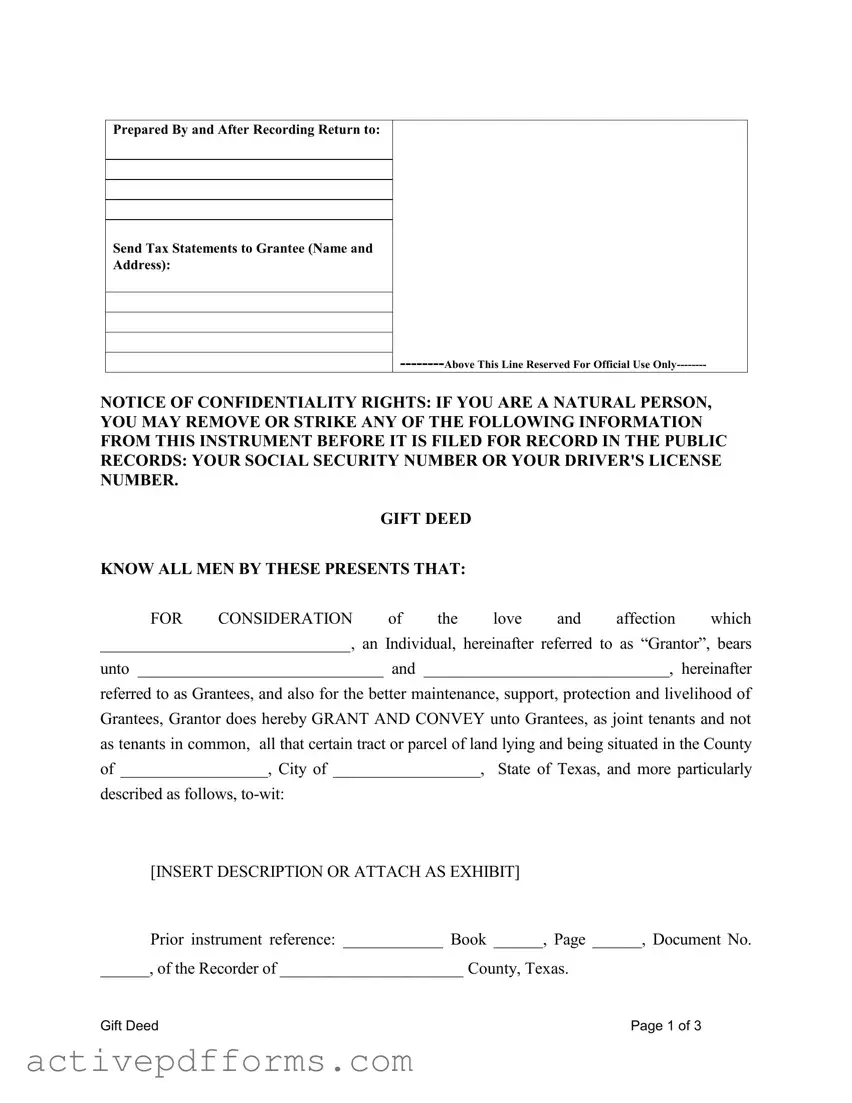Free Gift Deed Texas PDF Template
The Gift Deed Texas form is a legal document used to convey real estate from one person (the Grantor) to another (the Grantee) without any exchange of money, often motivated by love and affection. This form specifies that the Grantor gives and transfers property in Texas to the Grantee, outlining the conditions under which this transfer takes place, including that the Grantees receive the property as joint tenants with right of survivorship, not as tenants in common. It underscores the importance of a formal agreement in documenting the gift of property, ensuring that the conveyance is recognized legally and that the property rights are appropriately transferred.
Edit Gift Deed Texas Now



